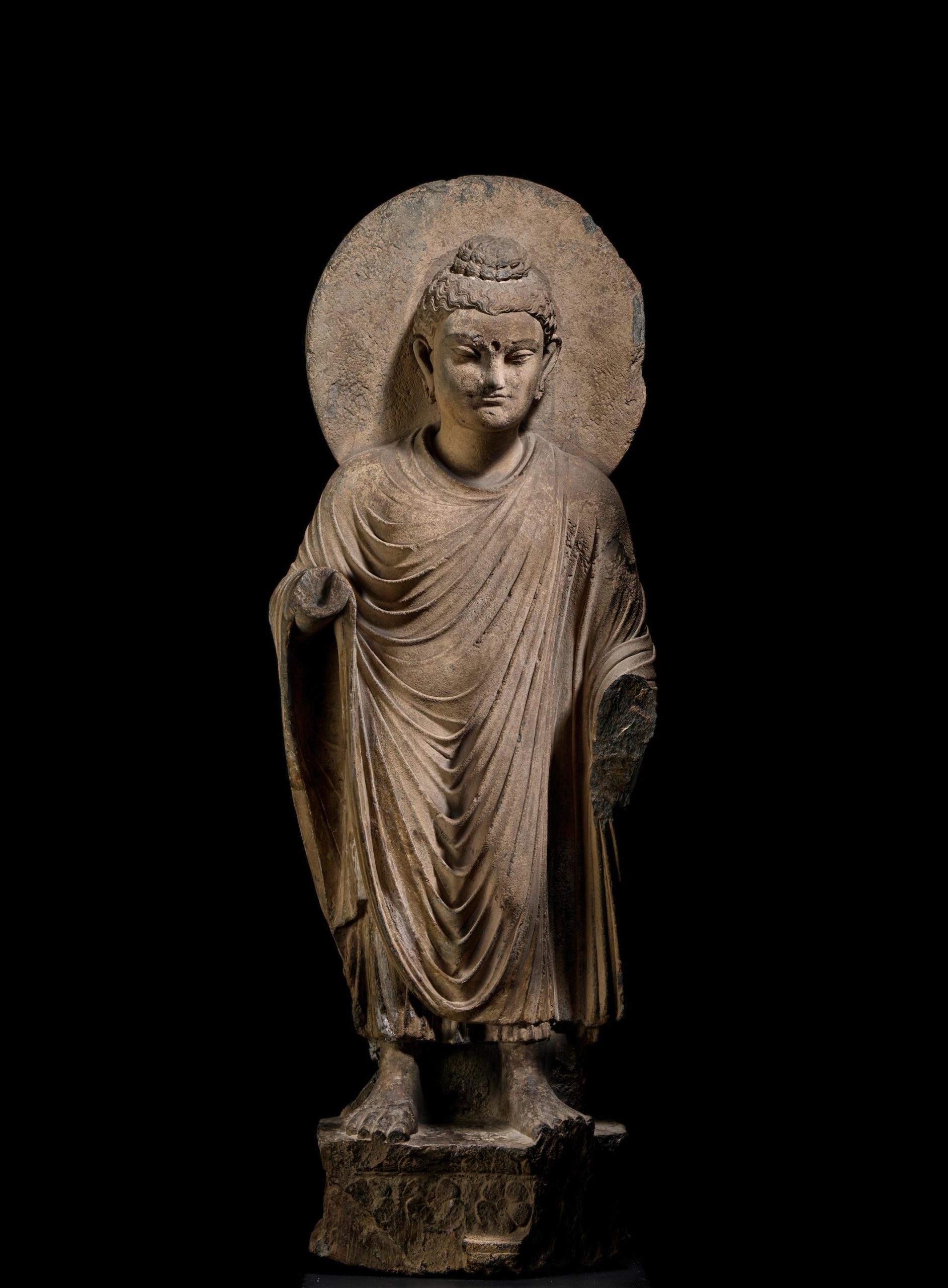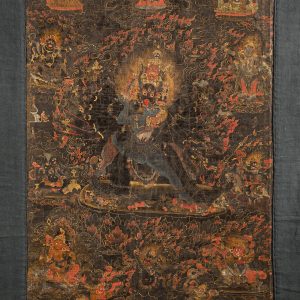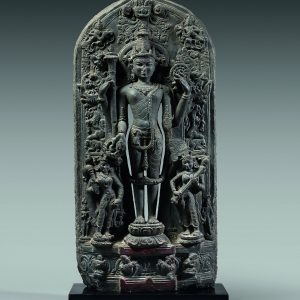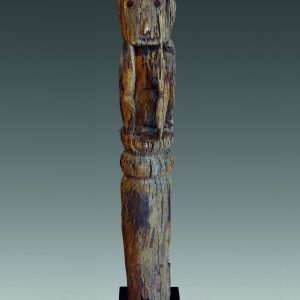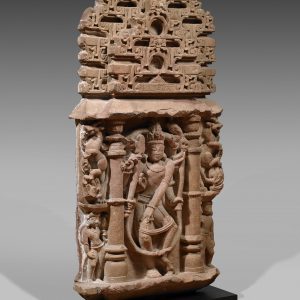Statue of standing Buddha
Schist
Ancient region of Gandhara
2nd-4th century
H. 90 cm
Description
The Buddha Śākyamuni
This superb sculpture comes from the ancient Gandhara region, which encompassed territories in Afghanistan, Pakistan and northern India. The Buddha is shown here standing. The Blessed One is recognisable by his monastic costume covering both shoulders here, and the circular mandorla behind his head; but above all by the lakṣaṇa, distinctive marks or signs of the Śākyamuni Buddha, notably the cranial protuberance (uṣṇīṣa), the tuft of hair between the eyes (ūrṇā) and his distended earlobes, revealing his former wealth. The right arm is fragmentary, but his hand would have been sketching the gesture of fearlessness (abhaya mudrā), palm turned outwards and fingers extended. This iconography is conventional for representing the historical Buddha and is fixed in the first centuries of our era, when the anthropomorphic representation of the Buddha appears.
An art at the crossroads of civilisations
This sculpture is characteristic of the art of the Gandhāra region, particularly the wet drapery with its concentric folds, which is a Hellenistic influence that bears witness to the exchanges and contacts between civilisations. We find all the characteristic qualities of this region, combining the finesse of Hellenistic realism and the iconographic codes of the Buddhist religion.
Coming from Central Asia, the Kuṣāṇa rulers (1st-3rd centuries) were the main patrons within this geographical area, and it was under their impetus that the art of the Gāndhāra underwent a formidable development. It was a real empire, which included territories from Uzbekistan to North India. This powerful kingdom was at the crossroads of many influences, notably thanks to the caravan trade and the Silk Road.
This syncretic style, so original in Buddhist art, enjoyed great posterity in the Gāndhāra, ensuring its popularity.
Remarkable craftsmanship
The round and full face, of great gentleness and serenity, the almond-shaped eyes, the straight nose, the fine mouth as well as the use of schist testify to a perfectly mastered art in its making, underlined by its excellent state of preservation. This remarkable sculpture probably took place in one of the two spaces of the Gandhāra monasteries: a courtyard accessible to devotees and cluttered with all sorts of ex-voto monuments, such as reliquary mounds (stūpa) and chapels, and, beyond that, a space reserved for monks only. It is therefore a unique and powerful work of art, with a history that goes back thousands of years.
Provenance : Hort Bucholz collection in the 1960s, then Galerie du Rhône.

